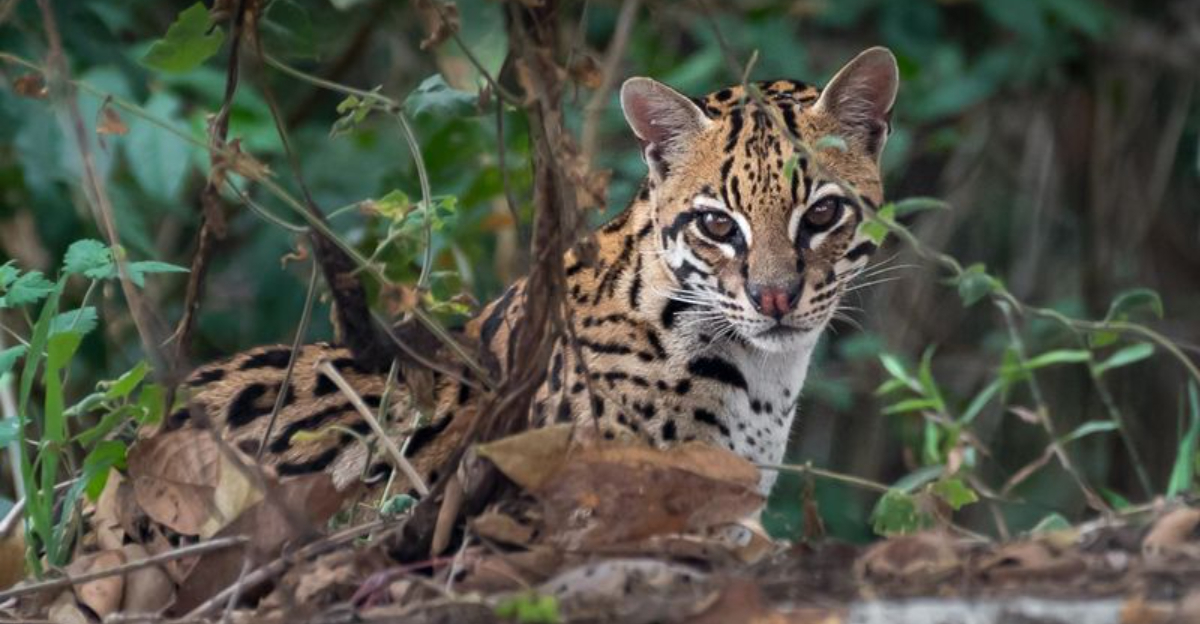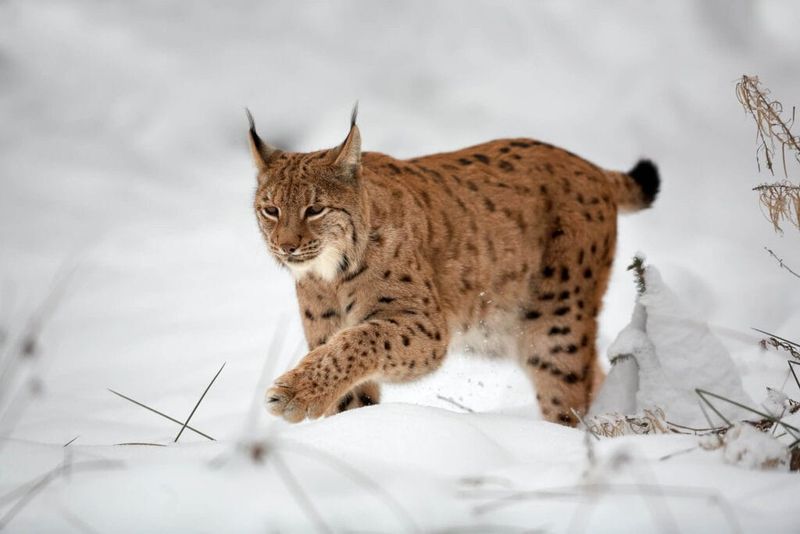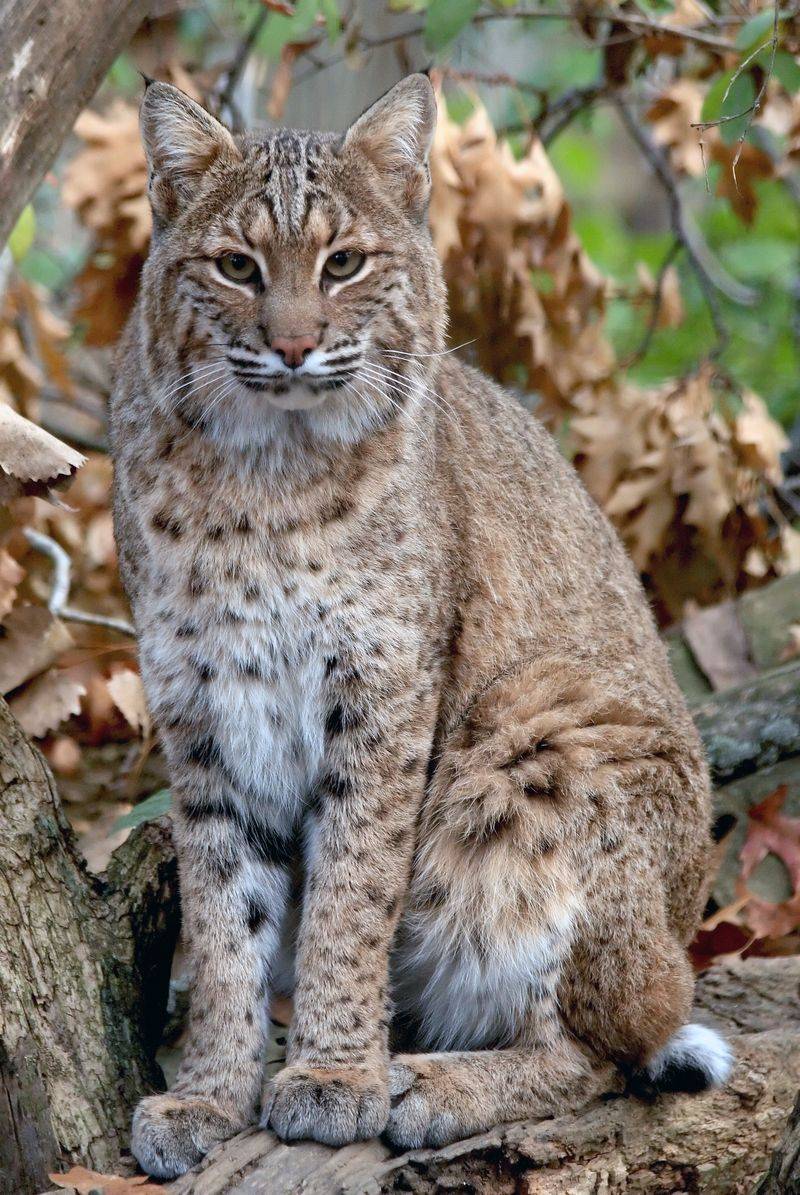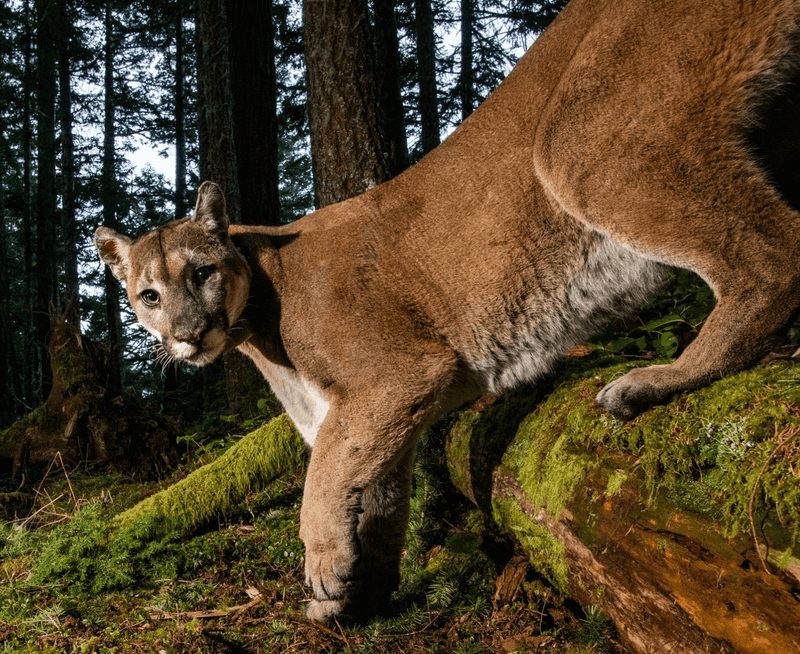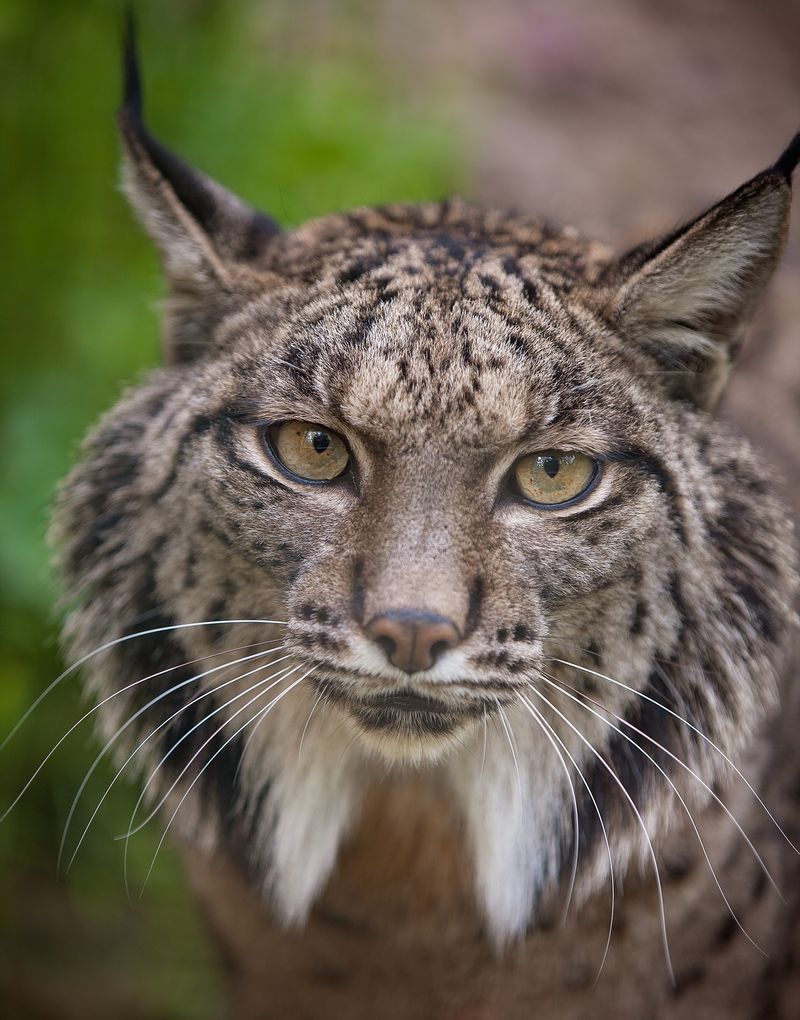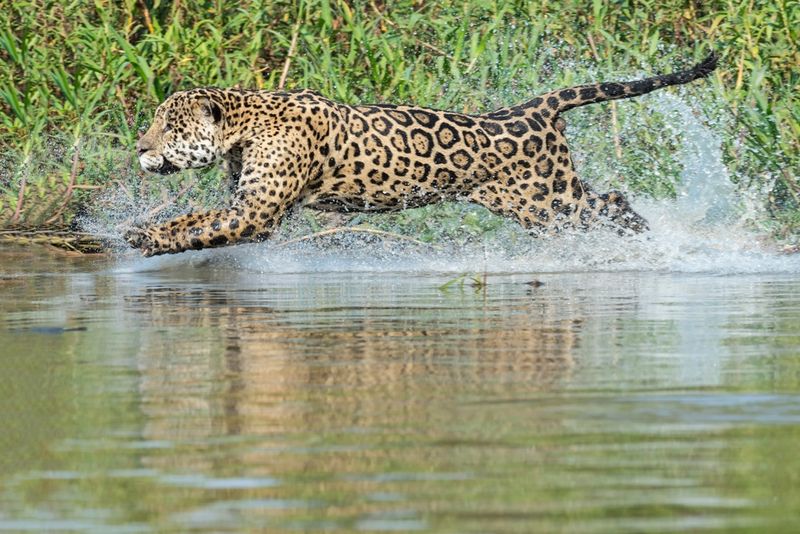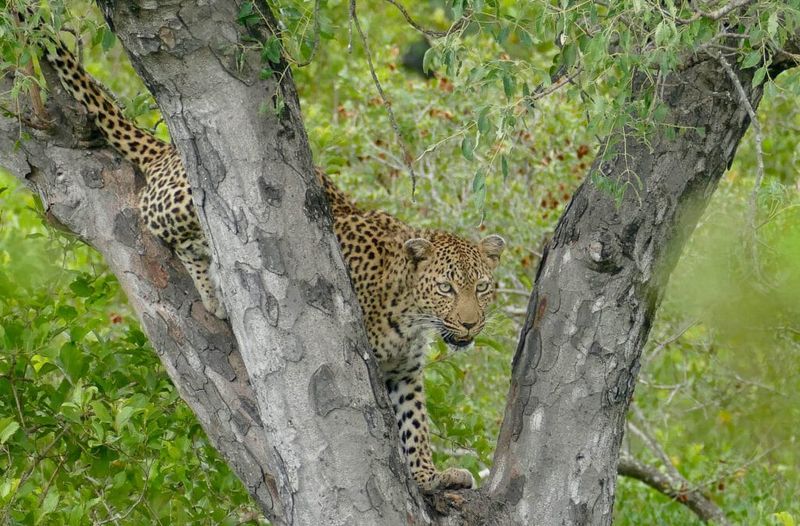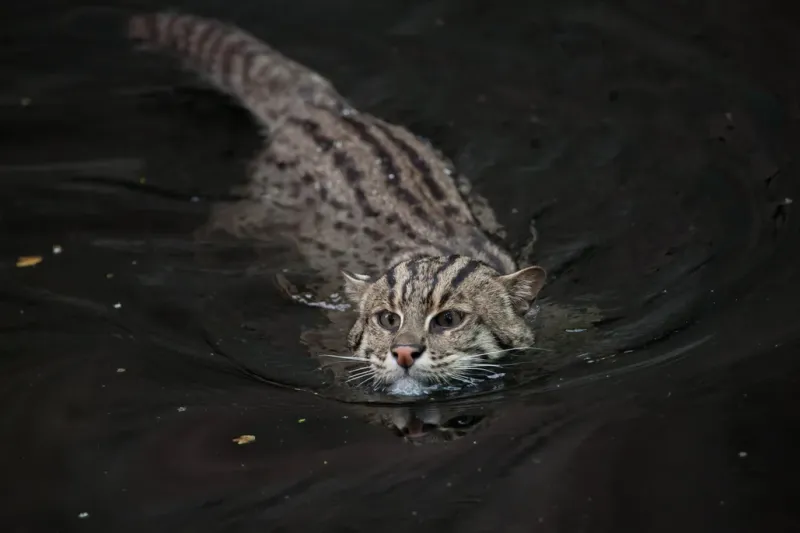📖 Table of Content:
Wild cats represent some of nature’s most extraordinary predators, finely tuned to their environments. Their adaptations vary widely, shaped by the demands of diverse habitats around the world. Each species demonstrates remarkable traits that ensure survival and hunting success.
From the dense forests of North America to the tropical jungles of Asia, wild cats exhibit a range of hunting strategies. Some rely on sheer strength and power to overpower prey, while others excel in stealth and camouflage. These abilities highlight the incredible diversity within the feline family.
Survival in the wild demands both physical prowess and keen instincts, traits that wild cats have perfected over millennia. Their evolutionary paths reflect the challenges of their ecosystems. Together, these factors make wild cats fascinating and formidable apex predators.
1. Eurasian Lynx
The Eurasian Lynx reigns supreme in northern forests with its distinctive tufted ears and powerful build. These solitary hunters can take down prey three times their size, including deer and wild boar.
Snow doesn’t slow these forest masters down. Their wide, fur-covered paws act like natural snowshoes, allowing them to move silently through deep snow while tracking prey.
Unlike many forest cats, lynx aren’t strictly nocturnal. They hunt during twilight hours and can cover territories spanning 100-300 square kilometers, marking their domain with scent and claw marks on trees.
2. Bobcat
Despite expanding human development, bobcats continue to flourish throughout North American woodlands. Recognizable by their distinctive short tails, these skilled hunters prey on rabbits, rodents, and sometimes deer. Their adaptability allows them to survive and hunt effectively in changing environments.
Masters of concealment, bobcats blend perfectly with forest undergrowth. Their spotted coats create a natural camouflage that makes them nearly invisible until they pounce on unsuspecting prey.
Fiercely territorial, male bobcats patrol areas up to 30 square miles, leaving scent markings on trees and rocks. Despite weighing just 15-35 pounds, these compact hunters can leap up to 12 feet in a single bound.
3. Canadian Lynx
In the boreal forests of North America, Canadian lynx rely primarily on snowshoe hares for food. Their populations experience boom-and-bust cycles that mirror those of the hares every 8 to 11 years. This synchronized pattern reflects their ecological connection.
Built for extreme cold, these medium-sized cats sport thick silver-gray fur and enormous snowshoe-like paws. Their specialized feet can spread to nearly double their normal size, providing crucial support for moving across deep snow without sinking.
Unlike their cousins, Canadian Lynx have unusually short tails with completely black tips. Their exceptional hearing comes from large, triangular ears topped with distinctive black tufts that can detect a mouse rustling under snow.
4. Cougar
Renowned as the most adaptable big cat, cougars inhabit regions stretching from Canadian woodlands to the peaks of South America. Often referred to as mountain lions or pumas, these formidable hunters are capable of taking down large prey such as elk and moose. Their strength belies their lean, agile frames.
Stealth defines the cougar’s hunting strategy. They stalk prey for hours before launching ambush attacks, often killing with a precision bite to the neck. Their incredible leaping ability allows them to pounce from heights of 15 feet or more.
Few realize cougars have the largest territory of any land mammal in the Americas. A single male might patrol up to 370 square miles, marking boundaries with scraped dirt piles and occasional screams that sound eerily human.
5. Iberian Lynx
The Iberian Lynx stands as the world’s most endangered cat species, with fewer than 1,000 individuals left in the wild forests of Spain and Portugal. Their survival depends almost entirely on European rabbits, which make up 90% of their diet.
Sporting a tawny coat speckled with dark spots, these medium-sized cats have distinctive beard-like facial ruffs and long ear tufts. Males defend territories of about 4-7 square miles, while females maintain smaller hunting grounds.
Conservation efforts have helped the Iberian Lynx population grow from just 100 individuals in 2002. Specialized breeding programs and habitat protection have given this forest specialist a fighting chance against extinction.
6. Ocelot
Forests across the Americas, from Texas to Argentina, are home to ocelots known for their beautiful golden coats marked with black rosettes and spots. No two patterns are alike, giving each cat its own signature appearance.
Primarily nocturnal, these medium-sized cats have exceptional night vision, seeing six times better than humans in the dark. Their hunting strategy involves patient stalking followed by explosive sprints, allowing them to catch birds, monkeys, and rodents with remarkable success.
Despite their wild nature, ocelots were once heavily trafficked as exotic pets. Fashion designer Salvador Dali famously kept an ocelot named Babou, bringing attention to these forest cats that need up to 5 square miles of territory each to survive naturally.
1. Jaguar
As the largest cats in the Americas, jaguars command rainforests with impressive strength and stealth. Their distinctive hunting method involves a skull-piercing bite strong enough to crush turtle shells and caiman armor. This powerful technique sets them apart from other big cats.
Masters of multiple terrains, these muscular predators swim as comfortably as they climb. Rivers pose no obstacle to jaguars, who often hunt capybaras and caimans directly from the water, demonstrating their versatility in jungle environments.
Each jaguar’s coat features a pattern of rosettes with small spots inside, creating camouflage perfect for dappled jungle light. This helps them disappear completely while stalking prey, only revealing themselves in the final moments before a lethal pounce.
2. Clouded Leopard
Among the treetops of Southeast Asia, clouded leopards move with exceptional climbing prowess. Their compact, powerful limbs combined with flexible ankles let them hang inverted beneath branches and climb downward headfirst. No other big cat shares these remarkable adaptations.
Named for their distinctive cloud-like markings, these medium-sized cats have the longest canine teeth relative to skull size of any modern cat. Their impressive fangs, proportionally matching those of extinct saber-toothed cats, help them dispatch prey quickly in dense jungle settings.
Secretive and rarely seen, clouded leopards move through three-dimensional jungle spaces with ghostlike efficiency. They can leap 15 feet between trees without touching the ground, making them true masters of the jungle canopy.
3. Marbled Cat
Resembling tiny clouded leopards, marbled cats wear similar cloud-shaped markings across their coats but in a more compact size. Weighing only 4 to 11 pounds, these jungle dwellers possess climbing abilities that rival their larger relatives. Their agility makes them true masters of the trees.
Perfectly adapted for life in the trees, marbled cats have extraordinarily long tails that sometimes exceed their body length. This tail acts as a counterbalance when leaping between branches in the dense jungles of Southeast Asia.
Remarkably little is known about these secretive cats. Their elusive nature and preference for dense, remote jungle canopies make them one of the least studied wild cats. Camera traps occasionally capture them moving through forests at night, revealing glimpses of their mysterious lives.
4. Leopard
Mastering survival in dense jungles, leopards rely on remarkable adaptability and strength. Their signature behavior involves dragging prey up trees, often hoisting animals twice their size to keep meals safe from lions and hyenas. This skill ensures they maintain their hard-earned food.
Stealth defines the leopard’s hunting strategy. Their rosette-patterned coats create perfect camouflage in dappled jungle light, allowing them to disappear completely until the moment they strike. Unlike many cats, leopards aren’t picky eaters – they hunt everything from insects to antelopes.
Melanistic (black) leopards, often called panthers, occur more frequently in dense jungle habitats. Their darker coloration provides superior camouflage in the shadows of thick vegetation, though they still possess the same rosette pattern visible in certain lights.
5. Fishing Cat
Fishing cats break the rule that cats hate water. These specialized jungle hunters actually dive completely underwater to catch fish, using partially webbed paws to swim effectively through the wetlands and mangrove jungles of South and Southeast Asia.
Built like aquatic tanks, fishing cats have short, muscular tails that function as rudders while swimming. Their double-layered coats include a dense, waterproof underlayer that keeps them dry even during underwater hunting expeditions.
Uniquely adapted for their fishing lifestyle, these medium-sized cats have a shortened muzzle and eyes positioned toward the front of their face. This adaptation allows them to compensate for light refraction when spotting fish beneath the water’s surface before making their characteristic headfirst dives.
6. Tiger
Known as the ultimate jungle warriors, tigers balance raw power with subtle stealth. Even at weights reaching 660 pounds, they slip silently through thick underbrush, their striped coats disrupting their shape against grasses and bamboo. This camouflage aids their deadly hunting strategy.
Unlike many cats, tigers love water and often swim to cool off or cross rivers while patrolling their vast territories. Their powerful legs allow them to leap over 30 feet horizontally and 15 feet vertically when attacking prey or escaping threats.
Each tiger possesses a unique pattern of stripes, like a fingerprint. This distinctive coat serves as perfect camouflage in jungle environments where dappled sunlight creates natural striped patterns across the forest floor.
